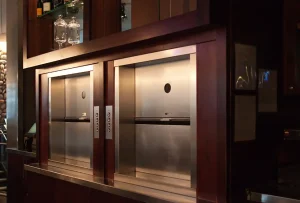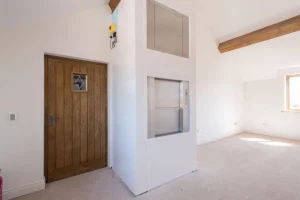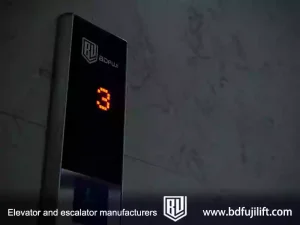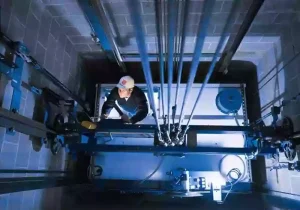Which dumbwaiter elevator fits your building? Which model is best for your needs? Our dumbwaiter elevator buying guide answers your questions and provides practical tips, so you can confidently choose the right lift for your project.
How to Choose a Dumbwaiter Elevator
Having the right dumbwaiter is essential, and choosing carefully can make everyday operations smoother and safer. With various capacities, installation requirements, and safety options available, understanding your choices will help you select the best model for your building. Below are key factors to consider when buying a dumbwaiter elevator:
- Load capacity: Dumbwaiters typically handle 50 to 300 kg. A small office or library may need only 50–100 kg, while a busy restaurant kitchen may require 200–300 kg.
- Installation space: The shaft dimensions and number of stops determine which model can be installed. Accurate measurements prevent costly redesigns.
- Operation system: Options range from simple push-button controls to programmable multi-stop systems. Choose based on your building’s complexity and user needs.
- Safety features: Door interlocks, overload protection, and emergency stops are vital to ensure safe and reliable operation.
Dumbwaiter elevator types
Choosing the right dumbwaiter for your building starts with understanding the different types available. Whether you need a floor-type model for heavier goods, a window-type for convenient tray delivery, there is a dumbwaiter to fit your project. Explore the main dumbwaiter types and their features below.
Floor Type Dumbwaiters
Floor type dumbwaiters are designed with an opening at floor level so that carts or heavier packages can be rolled directly inside. A floor type dumbwaiter is often chosen for warehouses and large commercial kitchens where transporting bulky or heavy items is a daily need.
Window Type Dumbwaiters
Window type dumbwaiters have the door positioned at waist height, making them convenient for passing trays, meals, or documents. A window type dumbwaiter is commonly used in hotels, restaurants, and offices where frequent, lighter loads must move quickly between floors.
What to Consider When Buying a Dumbwaiter Elevator
1. Floor Type or Window Type Dumbwaiter Elevator?
Which dumbwaiter type should you buy? In terms of performance, both floor type dumbwaiters and window type dumbwaiters are dependable options. Their main differences lie in how they are placed and used.
A floor type dumbwaiter is ideal for bulky or heavy items because it opens at floor level, making it easy to roll in carts or packages.
A window type dumbwaiter is best for smaller, frequent loads as it opens at waist height, allowing for quick and ergonomic transfer of trays, meals, or documents.
BDFUJI offers both floor type and window type dumbwaiters, built with durable stainless steel cabins to ensure long-term hygiene and reliability.
2. What Size of Dumbwaiter Elevator is Right for Me?
Standard, medium, and large: the size of dumbwaiter you need depends on the shaft space available in your building as well as the volume of goods you plan to transport. All sizes deliver the same reliable lifting performance.
- Standard dumbwaiter : A standard dumbwaiter cabin typically measures around 0.4–0.6 meters in width and depth, with a capacity of 50–100 kg. This size is suited for offices, libraries, or homes where only light loads need to move between floors.
- Medium dumbwaiter : A medium dumbwaiter ranges closer to 0.7–0.8 meters wide and deep, with a capacity of about 200 kg. This option works well for mid-sized restaurants or hotels handling regular trays of meals or supplies.
- Large dumbwaiter :A large dumbwaiter can be up to 1.0 meter in cabin width and depth, with a capacity of 300 kg. It is the right choice for commercial kitchens or warehouses where heavy and bulky goods are frequently moved.
Pro tip: Always carefully measure the shaft space before ordering to avoid costly adjustments later.
3. What Finishes are Available?
Freestanding dumbwaiters come in a range of finishes to suit your project requirements and the look of your building.
Match professional spaces: A stainless steel dumbwaiter is hygienic and durable, ideal for restaurants, hospitals, and kitchens. Match office interiors: A powder-coated dumbwaiter provides a cost-effective option that blends easily into office environments. Make a statement: A premium-finish dumbwaiter, such as glass or polished stainless steel, is often chosen for hotels and luxury residences.
Browse stainless steel dumbwaiters
4. How Important is The Energy Efficiency of a Dumbwaiter Elevator?
An energy-efficient dumbwaiter not only reduces electricity costs but also lowers the environmental footprint of your building. Because most commercial dumbwaiters are built to last, selecting a model with a high-efficiency motor can pay off in the long run.
5. How Important is After-sales Support When Buying a Dumbwaiter Elevator?
Dumbwaiters with stronger after-sales support generally come with faster access to spare parts and professional maintenance. These services help minimize downtime and ensure smooth daily operations.
6. How Important is The Noise Level of a Dumbwaiter Elevator?
If your building has areas where people gather—such as open-plan offices, hotel lobbies, or residential lounges—a quiet dumbwaiter is likely a must-have. In service corridors or back-of-house areas, noise may be less of a priority. The right noise level comes down to user comfort and the layout of your building.
Our BDFUJI dumbwaiters are engineered for quiet operation, with some models running at around 40 decibels during travel—about the same as soft background music. Giving you confidence that daily operations will not be disrupted by unwanted sound.
How Much do Dumbwaiter Elevators Cost?
Dumbwaiter elevator prices can range from around $3,000 to $20,000. Every model is designed to move goods efficiently between floors. Extra features on select models—such as multi-stop programming, stainless steel cabins, premium finishes like glass panels, larger capacities up to 300 kg, and advanced safety interlocks—tend to cost more. Higher-priced dumbwaiters are also generally quieter, and some can be customized to integrate seamlessly with the interior design of your building.
What are The Best Dumbwaiter Elevator Brands?
For buyers seeking proven reliability, BDFUJI dumbwaiters stand out as a trusted choice. Built for quiet operation, certified safety, and flexible customization, BDFUJI models are designed to perform dependably for years in diverse environments—from hotels and hospitals to offices and private residences.
Other international brands may also emphasize certifications and long service histories, while regional suppliers can provide lower initial prices but often with limited support or spare parts. The best option depends on your priorities, but with BDFUJI you gain both dependable performance and long-term value, backed by projects across Asia, the Middle East, and South America.
How Long do Dumbwaiter Elevators Last?
How long does a dumbwaiter elevator last? High in quality and engineered for reliability, BDFUJI dumbwaiters are built to serve you for many years. Before leaving the factory, each unit is tested to meet strict quality standards. On average, dumbwaiter elevators last 15–25 years with proper maintenance.
FAQ
Can a Dumbwaiter Elevator be Retrofitted Into an Existing Building?
Yes, retrofitting is possible if there is sufficient shaft space. Window-type units are often easier to integrate into older structures with limited room.
Are Dumbwaiter Elevators Safe for Home Use?
Absolutely. With door interlocks, overload sensors, and fire-rated options, they are safe for residential use. BDFUJI’s home dumbwaiters are designed with compact footprints for easy installation.
How Long Does Installation Usually Take?
Typical installation takes 1–3 weeks, depending on shaft readiness and number of stops. Custom finishes or complex retrofits may extend the timeline.
Do Dumbwaiters Require Special Maintenance?
Like all elevators, they need regular inspection. A quarterly service schedule is common, covering safety checks, lubrication, and cleaning of guide rails. Regular maintenance extends lifespan and prevents breakdowns.










